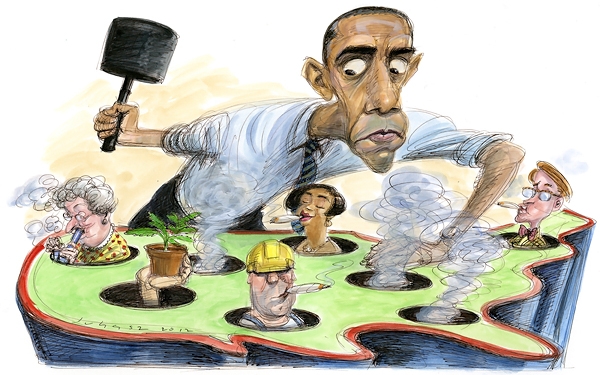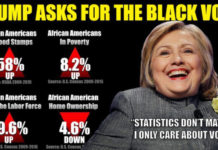Farmers who consistently grow more than the allotted amount of coca, or who produce it outside designated areas, are subject to forced eradication. Bolivia’s anti-narcotics forces also still search out cocaine labs and confiscate illegal drug shipments.
“[Bolivia] challenged the United States, and it turned out the United States was not the omnipotent force in drug war policy that it seemed to be,” says Kathryn Ledebur, director of the Andean Information Network, a Bolivia-based advocacy group. “And it was important to establish that for everyone in Latin America.”
The US isn’t completely divorced from the process. It continues to fund the antinarcotics effort in Bolivia through the US embassy, but the aid has dropped from about $40 million in 2006 to $10 million in 2012, according to US State Department figures.
Instead, Bolivia has increasingly been partnering with both the EU and Brazil, with whom it shares a long, porous border. Brazil, which is now the second-largest consumer of cocaine in the world, plans to use drones and other technology to help patrol the Amazonian area that the two countries share.
Brazil’s ambassador to Bolivia, Marcel Biato, says the countries have been cooperating more closely since 2010, at the request of La Paz. “I think this link has to do with various internal elements, but also a clear distancing from the US and perhaps greater confidence that Brazil can develop an alternative to all of the historic problems,” he says.
As part of the social control program, the coca unions educate local growers about the importance of keeping cultivation at legally accepted limits, which markedly increased during the early years of the Morales administration. When the US government was heavily involved in the eradication effort, before 2004, Bolivia was allowed to plant 46 square miles of coca a year for traditional uses. Since then, the Bolivian government has boosted that amount to 77 square miles.
To further aid growers, Morales is trying to find more legal international markets for the leaf, something the UN charter on narcotics prohibits. In Bolivia, coca is widely used in teas and chewed (bags of leaves are sold on street corners) as well as incorporated into consumer items such as candy, cookies, granola bars, and toothpaste.
The leaf acts as a mild stimulant – it produces no major high like purified cocaine – but can help overcome fatigue, hunger, and thirst. For these reasons, it has long been used as a medicine – something Bolivians have turned to for everything from nosebleeds to indigestion to dealing with childbirth.
The question is how much of it gets made into cocaine. Growers like Lopez Vasquez say there are always people who want to produce more coca than the state allows, or who turn it into cocaine and ship it off to Brazil and as far away as Africa and Europe. But as she stands in a coca field in her hometown, Lopez Vasquez is confident that coca cultivation will decline in the Chapare because the powerful unions are committed to working with, instead of fighting, the government to manage cultivation.
Mr. Martinez, the state official and coca grower, agrees. “More than ever we have applied ourselves to agree on mechanisms between the state and the coca producers so we have positive results,” he says in his Chapare office, where he pulls out some coca leaves from his drawer and slips them in his cheek. “We haven’t had any deaths. We haven’t had any injuries. There has been no blood spilled and no conflicts.”
Yet not everyone is convinced the situation is under control. Even though coca leaf cultivation has stabilized in recent years, the US believes that Bolivia is producing far more than even the limits La Paz has set – and thus the potential for cocaine production remains dangerously high.
According to the US’s annual International Narcotics Control Strategy Report, the country cultivated 133 square miles of coca in 2010, down slightly from 2009’s 135 square mile estimate. From this, the US estimates that the pure cocaine potential remains at 195 metric tons, or 70 percent higher than in 2006.
Further, the US believes Bolivia’s ability to arrest major traffickers has eroded since the DEA was kicked out in 2008. “Expelling DEA has seriously harmed Bo-livia’s counternarcotics capability, especially in regard to interdiction,” the report says.
Bolivia has certainly seen setbacks. In 2011, an ex-commander of the nation’s antidrug police and current head of a drug intelligence agency was arrested by the DEA in Panama and subsequently pleaded guilty to trafficking. While no reliable evidence has surfaced linking other top Bolivians to the drug trade, accusations swirl that the links go beyond the one official.
“The highest levels of governance in those countries [Bolivia and Venezuela] are complicit in the global drug trade now,” says Michael Braun, the former chief of operations for the DEA.
Bolivia represents one of the most extreme examples of countries diverging with the US over drug policy. But others are starting to question elements of America’s priorities as well – some of them surprising.
When Mexican President Calderón was elected in 2006 and made fighting the scourge of drug cartels the cornerstone of his presidency, he was feted in American circles. A new era of “co-responsibility” was ushered in as the US signed off on a $1.6 billion aid package to help Mexico fight trafficking.
But as the years wore on and the toll mounted – including more than 50,000 dead in six years, even as top traffickers were caught and extradited to the US – so did public criticism of the strategy. It ultimately cost Calderón’s conservative National Action Party the presidency in July elections. The incoming president, Enrique Peña Nieto, who takes office in December, has promised to “reduce violence” instead of focusing single-mindedly on netting traffickers and stanching the flow of drugs.
What that means exactly isn’t clear. But ideas are being floated that would make American officials grimace, according to Alejandro Hope, a security analyst and former official in Mexico’s intelligence agency.










